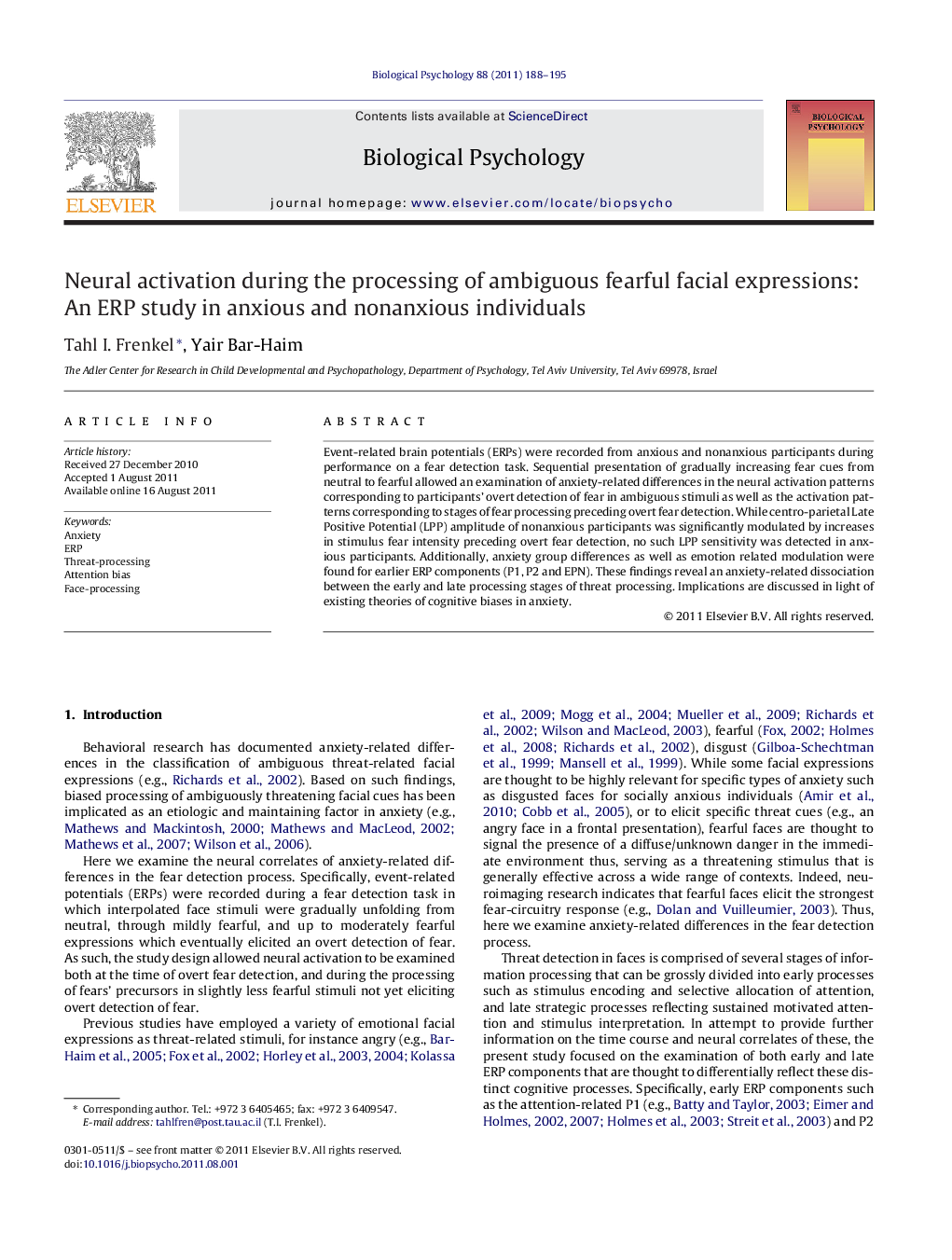| Article ID | Journal | Published Year | Pages | File Type |
|---|---|---|---|---|
| 921119 | Biological Psychology | 2011 | 8 Pages |
Event-related brain potentials (ERPs) were recorded from anxious and nonanxious participants during performance on a fear detection task. Sequential presentation of gradually increasing fear cues from neutral to fearful allowed an examination of anxiety-related differences in the neural activation patterns corresponding to participants’ overt detection of fear in ambiguous stimuli as well as the activation patterns corresponding to stages of fear processing preceding overt fear detection. While centro-parietal Late Positive Potential (LPP) amplitude of nonanxious participants was significantly modulated by increases in stimulus fear intensity preceding overt fear detection, no such LPP sensitivity was detected in anxious participants. Additionally, anxiety group differences as well as emotion related modulation were found for earlier ERP components (P1, P2 and EPN). These findings reveal an anxiety-related dissociation between the early and late processing stages of threat processing. Implications are discussed in light of existing theories of cognitive biases in anxiety.
► ERPs of anxious and nonanxious participants are examined during fear detection. ► Fear intensity modulated Late Positive Potentials solely in nonanxious participants. ► Additional anxiety differences were found for earlier ERP components (P1, P2 and EPN). ► Anxiety-related dissociation between stages of fear processing is implicated.
